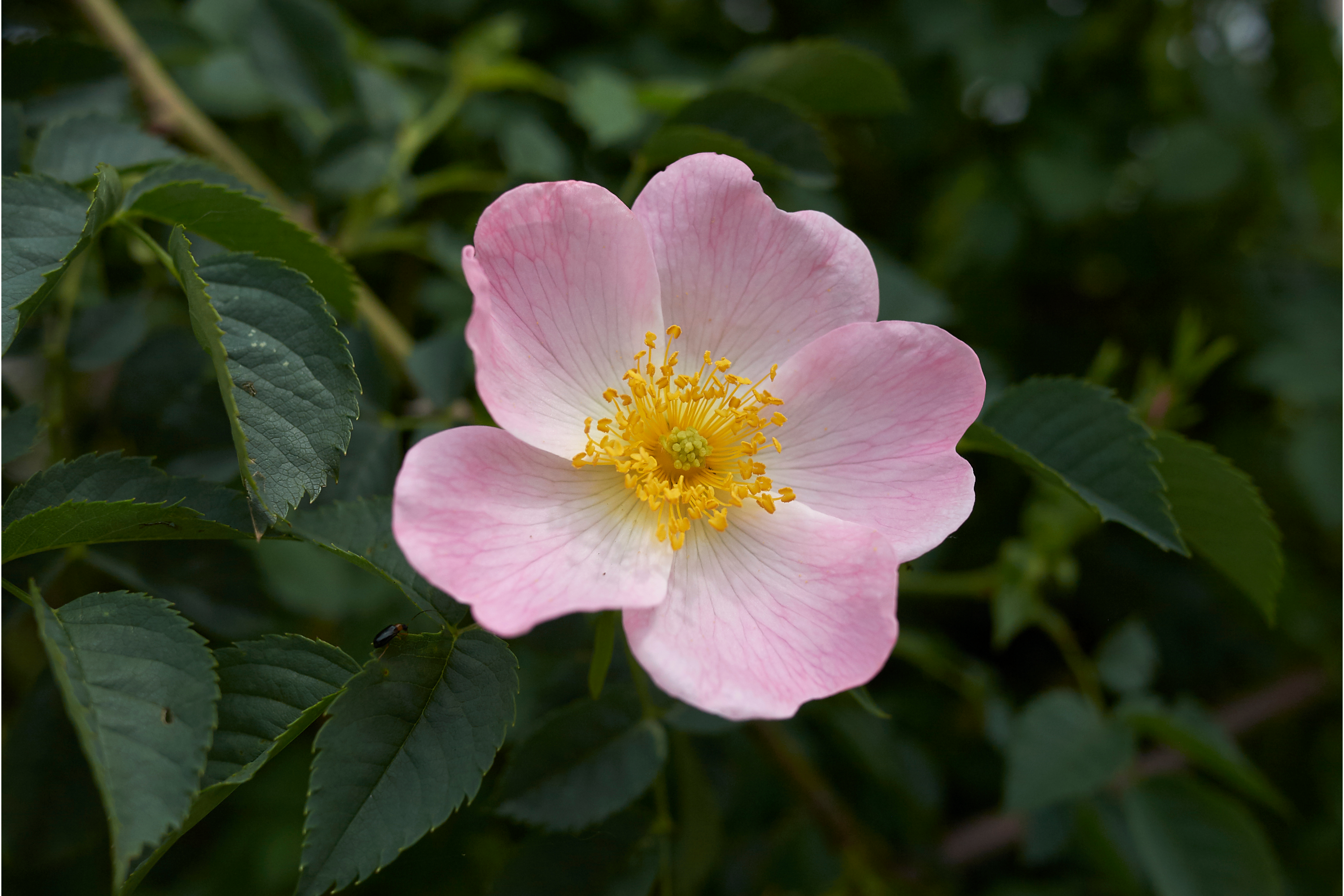Dog rose
(Rosa canina)

Description
Rosa canina, commonly known as the dog rose or wild rose, is a species of flowering plant in the Rosaceae family. It is a deciduous shrub that is native to Europe, Asia, and Africa. The plant is characterized by its long, arching branches that produce thorny stems and pink or white five-petaled flowers. The plant is also known for its edible fruit, which is used in the production of jams, jellies, and teas. In this article, we will explore the various aspects of Rosa canina, including its description, distribution, cultivation, uses, and benefits. Description Rosa canina is a medium to large-sized shrub that grows up to 3 meters in height. The plant has arching branches that produce thorny stems, which can reach up to 2 centimeters in length. The leaves of the plant are pinnate, with five to seven serrated leaflets that are green on the upper surface and pale on the lower surface. The flowers of the plant are pink or white, with five petals and a yellow center. They bloom from late spring to early summer, and they are followed by spherical, orange-red fruit known as hips. Distribution Rosa canina is a widespread species that is native to Europe, Asia, and Africa. The plant grows in a variety of habitats, including forests, hedgerows, scrublands, and coastal areas. It is commonly found in the Mediterranean region, but it also grows in other parts of Europe, as well as in Asia Minor and the Middle East. Cultivation Rosa canina is a hardy plant that can be easily grown in most types of soil. The plant prefers well-drained soil and full sunlight, but it can also tolerate partial shade. It is drought-tolerant and can withstand harsh winter conditions. The plant can be propagated by seed, cuttings, or layering. It is recommended to prune the plant in late winter or early spring to encourage new growth and to remove any dead or diseased branches. Uses Rosa canina has been used for various purposes throughout history. The fruit of the plant is used to produce jams, jellies, and teas. The hips are high in vitamin C, and they are believed to have anti-inflammatory and antioxidant properties. The plant has also been used in traditional medicine to treat a variety of ailments, including colds, flu, and diarrhea. The leaves and petals of the plant are also used in cosmetic products, such as soaps, creams, and lotions. Benefits Rosa canina has several health benefits that make it a popular choice in traditional medicine. The fruit of the plant is rich in vitamin C, which is important for maintaining a healthy immune system. The hips are also high in antioxidants, which can help to protect the body against free radical damage. The plant has been shown to have anti-inflammatory properties, which can help to reduce pain and inflammation in the body. It is also believed to have antiviral and antibacterial properties, which can help to fight infections. In conclusion, Rosa canina is a versatile and beneficial plant that has been used for various purposes throughout history. Its edible fruit, high in vitamin C, and antioxidant properties make it a popular choice in the production of jams, jellies, and teas. The plant also has several health benefits, including anti-inflammatory, antiviral, and antibacterial properties, which make it a popular choice in traditional medicine. Whether you are a gardener, a herbalist, or simply a lover of nature, Rosa canina is a plant that deserves your attention and admiration.
Taxonomic tree:







